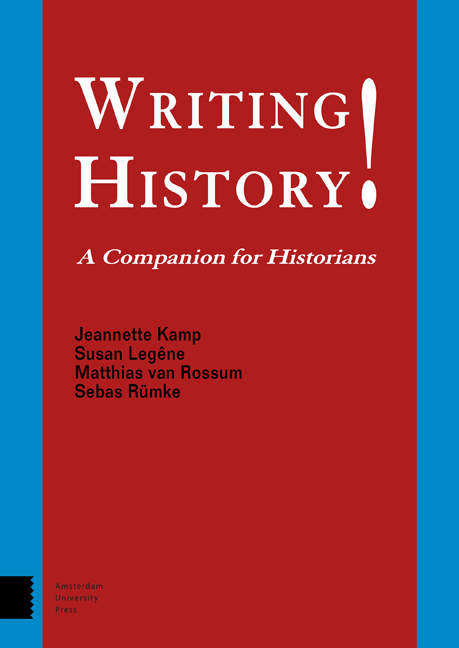Book contents
- Frontmatter
- Contents
- Introduction
- Structure of the Book
- 1 Historical Research: The Importance of the Research Question
- 2 The Building Blocks of the Historical Method
- 3 Applying the Historical Method
- 4 Writing History: Narrative and Argument
- 5 Presentation and Historical Debate
- 6 A Historian – Now What?
- Appendices
- I Guidelines for Notes
- II Other Styles of Notes
- Acknowledgements
- Index
I - Guidelines for Notes
- Frontmatter
- Contents
- Introduction
- Structure of the Book
- 1 Historical Research: The Importance of the Research Question
- 2 The Building Blocks of the Historical Method
- 3 Applying the Historical Method
- 4 Writing History: Narrative and Argument
- 5 Presentation and Historical Debate
- 6 A Historian – Now What?
- Appendices
- I Guidelines for Notes
- II Other Styles of Notes
- Acknowledgements
- Index
Summary
Referring to the literature, websites, sources
Referring to a book
A reference to a book should contain, in consecutive order, the author's name, the title (in italics), and the town and year in which the book was published (in brackets). This information can be found on the title page and reverse of the book's title page. The reference should follow the spelling used in the title on the title page. An exception to this rule is the use of capital letters. In Dutch historical writing, the custom is to only use capitals for words in the title for which they would be used in an ordinary sentence, regardless of the use of capitals on the title page of the book itself. If a book has a subtitle, it should form a new sentence in the reference. The same applies to the spelling of the author's name: it should correspond to the name on the title page. Sometimes an author's full first name is given, while in other cases only the initials of the author's first name(s) are given. In notes, the author's name should also be spelled as it is given on the title page.
For example, if you are using the original edition of Johan Huizinga's Herfsttij der Middeleeuwen [The Waning of the Middle Ages], you should refer to it as follows:
J. Huizinga, Herfsttij der Middeleeuwen. Studie over levens- en gedachtenvormen der veertiende en vijftiende eeuw in Frankrijk en de Nederlanden (Haarlem 1919).
However, few people have the first edition of Huizinga's famous work, which was published in 1919 by H.D. Tjeenk Willink of Haarlem. You will not often come across the aforementioned reference. If you refer to a later edition, you do not include the year and town of the original edition but rather those of the version you consulted. This is necessary because page numbers can deviate per edition, so if you refer to a certain page, it is essential to mention which version of the book you used. You must also state exactly which edition it is. References to the first ten editions are written in letters, as in De Buck, whom we quoted on page 133: ‘Tenth edition, seventh printing’. After ten editions, the number is given in numerals. The information about the edition should be given before the place it was published, separated by a semi-colon.
- Type
- Chapter
- Information
- Writing History!A Companion for Historians, pp. 133 - 152Publisher: Amsterdam University PressPrint publication year: 2018



